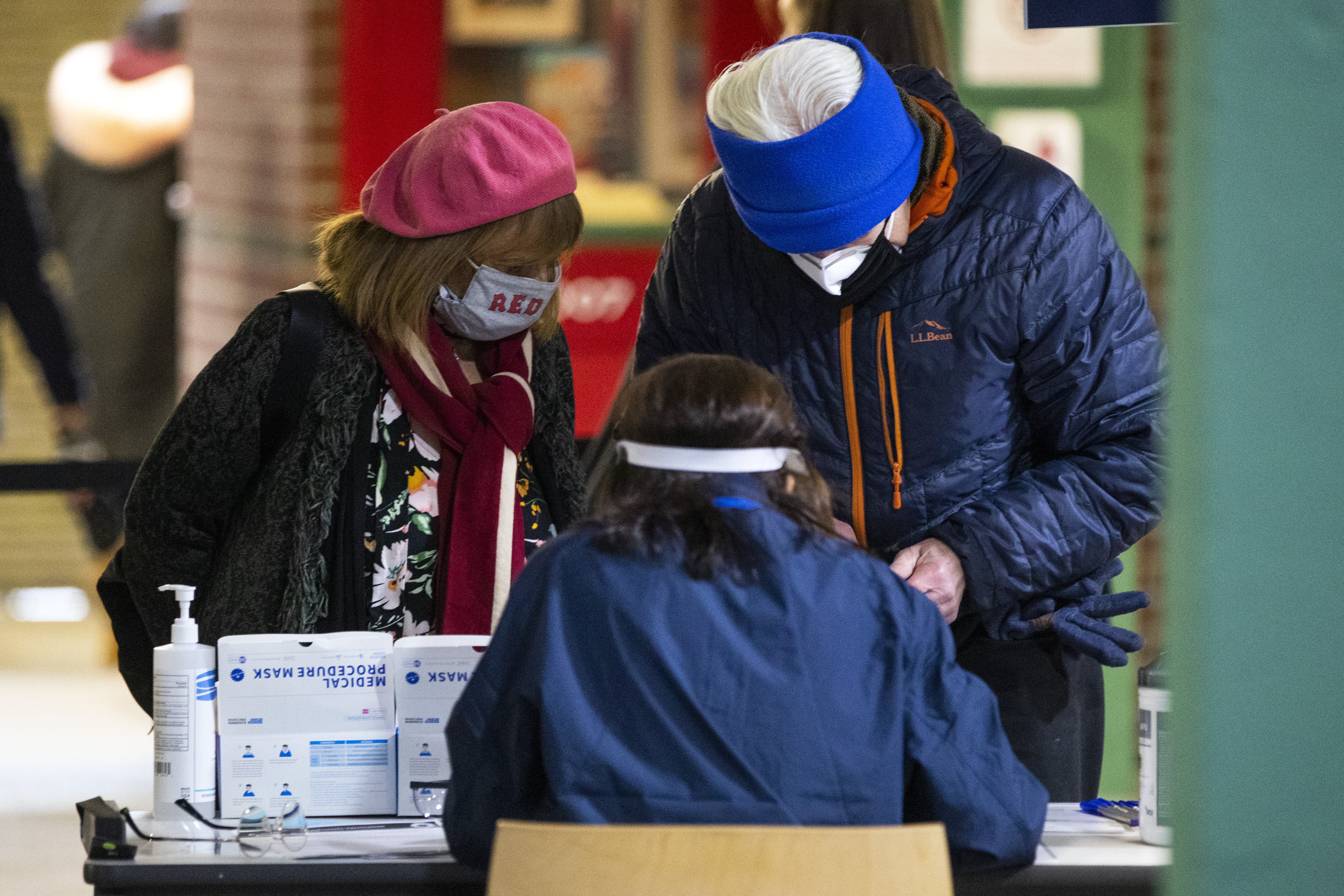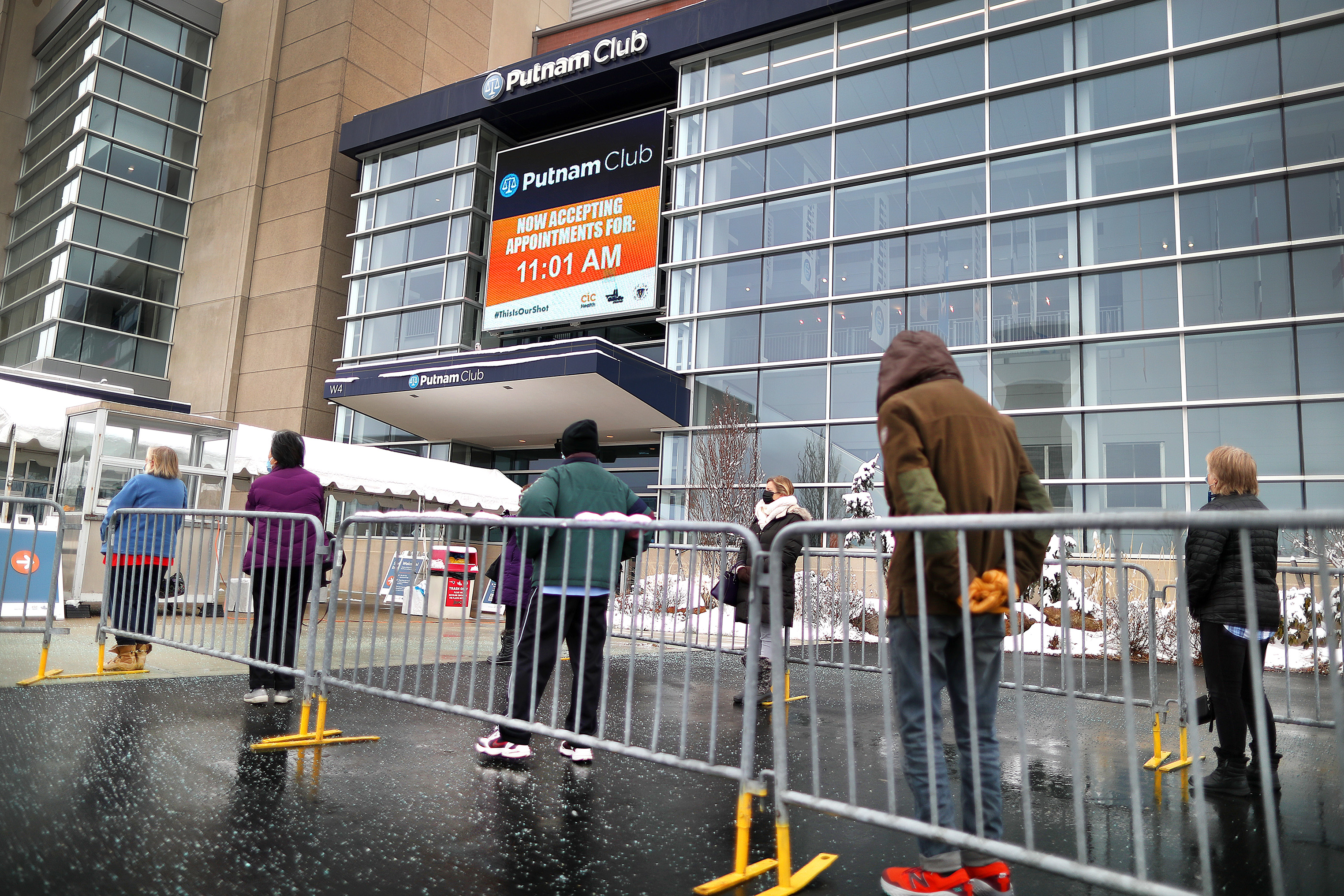A total of 19 Massachusetts communities are now at the highest risk of coronavirus transmission, nine fewer than last week, health officials said Thursday. It's the seventh straight week the number has fallen.
The town-by-town coronavirus risk data classifies communities' risk level on a scale from red, the highest, to grey -- last week it put 28 Massachusetts communities in the red zone. Less than two months ago, there were 229 communities in red, mirroring a dip in the state's COVID-19 metrics as the latest surge subsides. (See this week's full list of red zone communities below.)
WATCH ANYTIME FOR FREE
Stream NBC10 Boston news for free, 24/7, wherever you are. |
Massachusetts' coronavirus metrics have been trending down since roughly the new year, signaling that the state's second surge is abating. The drop in communities in the red zone appears to be another sign the surge is receding, though experts say the more contagious coronavirus variants now appearing in the state could drive a new surge.
Get updates on what's happening in Boston to your inbox. Sign up for our News Headlines newsletter.
See Thursday's town-by-town coronavirus data here.
Massachusetts COVID Hot Spots
The following 19 communities are in the highest risk level as of Thursday: Blackstone, Chicopee, Clinton, Fall River, Freetown, Hadley, Haverhill, Lawrence, Ludlow, Lynn, Methuen, New Bedford, Peabody, Plainville, Springfield, Sterling, Sutton, West Bridgewater and Weymouth.
Of those communities, six are newly in red on the list this week: Clinton, Hadley, Ludlow, Plainville, Sterling and Sutton.
And 15 communities dropped out of red: Acushnet, Ashburnham, Brockton, Cohasset, Lakeville, Lowell, Middleborough, Plymouth, Revere, Rutland, Southampton, Southbridge, Taunton, Templeton and Westminster.
To qualify for the red, high-risk category under the new metrics, communities with populations under 10,000 must have more than 25 cases. For mid-size communities of between 10,000 and 50,000 people, they must have an average of more than 10 cases per 100,000 people and a positive test rate of more than 5%. And for larger communities of greater than 50,000 people, they must have more than 10 cases per 100,000 people and a positive test rate of more than 4%.
Previously, the state used the number of cases detected on average each day over two weeks to determine if Massachusetts' communities are at high risk for coronavirus transmission. The new list factors in population size and positive test rate.
Read this week's full report here, with data on communities' percent positivity, county- and state-level data and more.
The Department of Public Health is no longer including a map of the community-level risk in the weekly report. An official told NBC10 Boston that the map is no longer seen as being as helpful as it once was, now that coronavirus cases are being reported in most communities.
More on Coronavirus in Massachusetts
Massachusetts Vaccine Data
Just under 2.4 million coronavirus vaccine doses have been shipped to Massachusetts as of Thursday's daily COVID-19 vaccination report, and 80.5%, or 1.93 million, have been administered so far.
The state's weekly COVID-19 vaccine report, released Thursday but covering a period from this Tuesday to the prior Wednesday, showed progress over the week before in the number of doses administered in the state: 309,340 compared to 215,571.
Changes to Massachusetts' Hot Spot Data
The weekly report has a history of somewhat abrupt changes.
When Massachusetts health officials first unveiled a digital coronavirus dashboard in early January, they stopped releasing town-by-town coronavirus metrics on a weekly basis, since they are included in the "city and town" tab of the interactive dashboard. It shows communities' positive test rate and overall testing rate, though not other metrics that were included in the old format.
"Data previously found in this report, including town-by-town cases and testing reporting, can now be found in the daily interactive dashboard," a note in that week's pared-down weekly report said. But a new version of the report was issued later that night brought back the data.
More major changes before that knocked the number of communities in the red zone from 121 to 16 as what was defined a high-risk community changed. Officials said the adjustment brought Massachusetts more in line with risk levels in other states.
However, the numbers grew again as the weeks passed, eventually rising to 190 communities in the red zone before the data switched to the interactive dashboard.
That week's report also dropped the map that displayed the town-by-town coronavirus data. It showed where in the state communities were at high, moderate or low risk of transmission, but officials said it was no longer very informative.
In the weeks before that, officials added information on COVID-19 clusters, both on where major clusters have been identified -- they're listed in the report with an asterisk -- and on trends among clusters.
The color-coded town-by-town data was introduced in August, and the Baker administration announced that the state would focus its strongest COVID-mitigation efforts on towns in the red category. Communities can only move to Step 2 of Phase 3 of Massachusetts' reopening plan, announced in late September, if they are not consistently in the red.
Before the introduction of that data, the standard for measuring hot spots had been the positive COVID test rate over the preceding 14 days. The Department of Public Health's weekly report still includes that information, along with other metrics like how many tests are being conducted locally and how many cases have been reported locally.
Some of Massachusetts' smaller towns had taken issue with having their risk assessed based on cases per capita alone. They said that, when a town only had a few thousand people, an outbreak in just one household could send it into red under the criteria at the time: 8 cases of COVID-19 per 100,000 residents.



